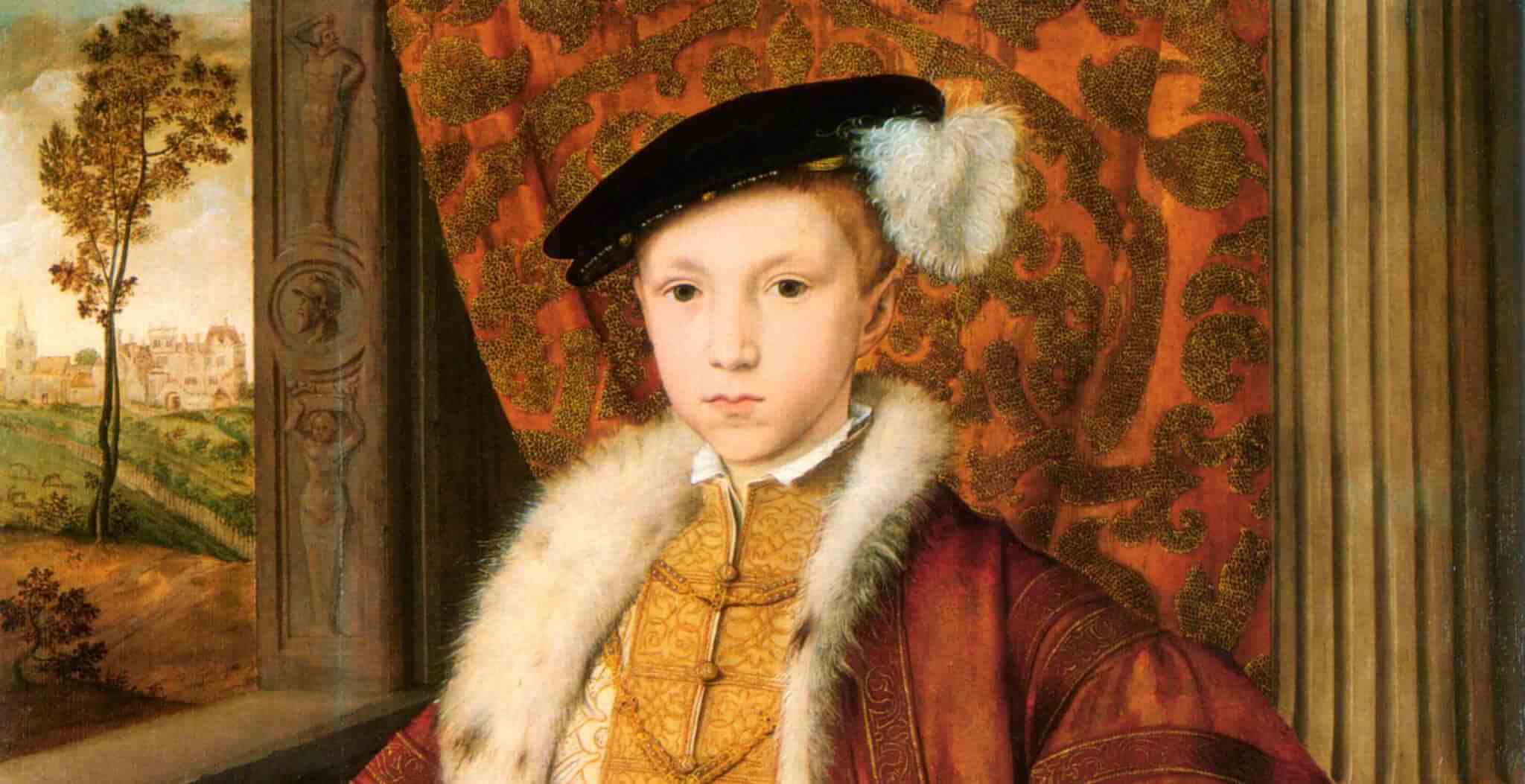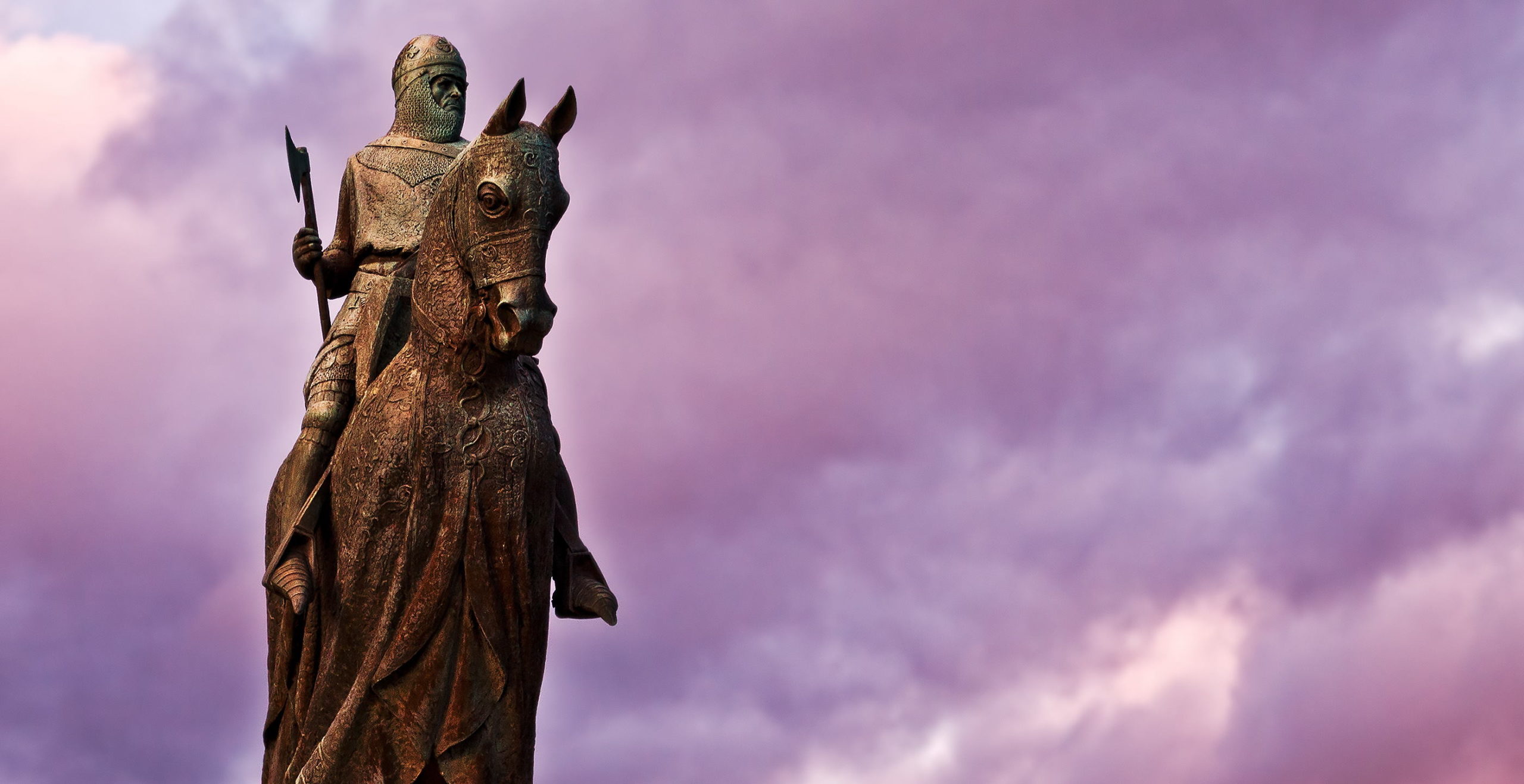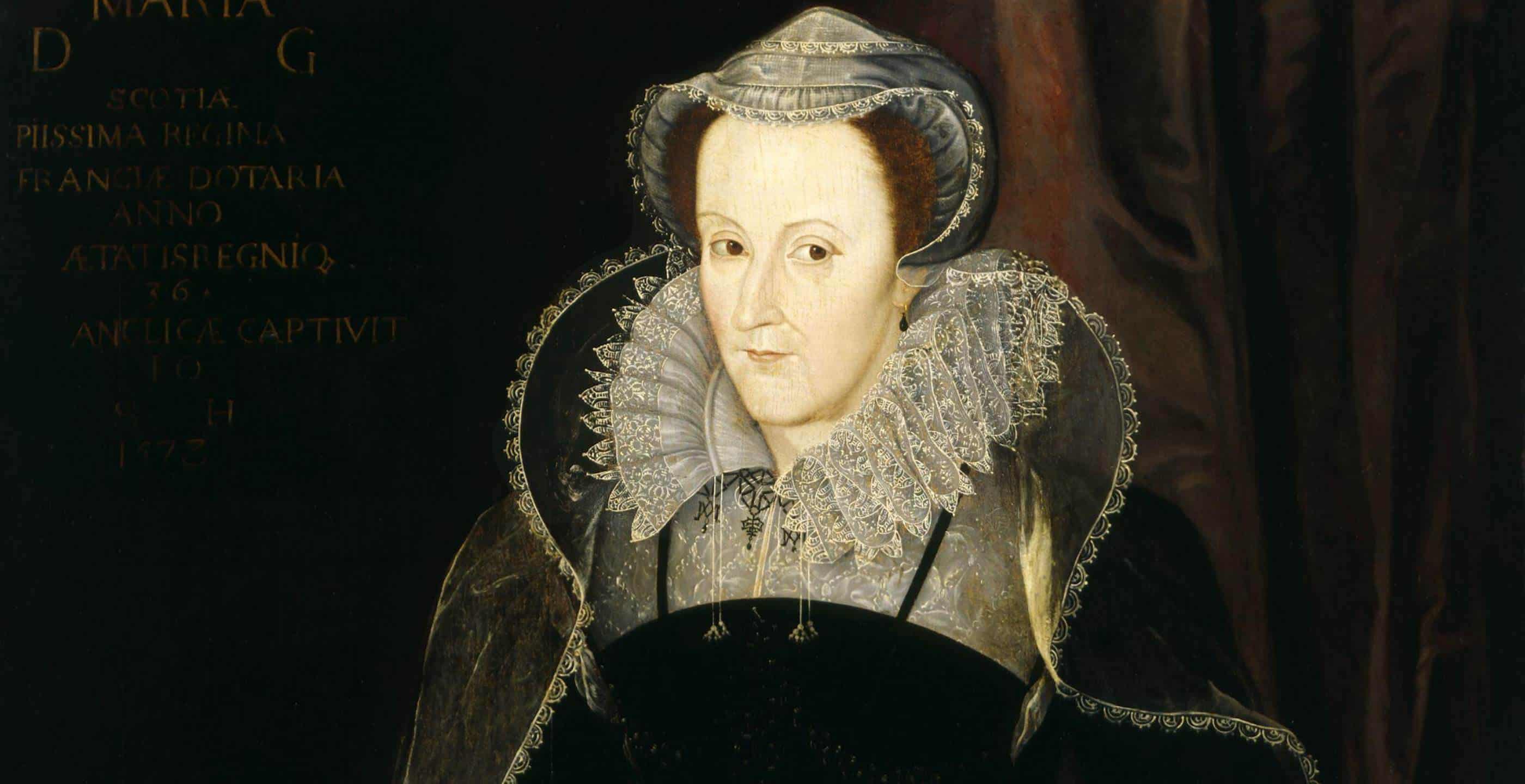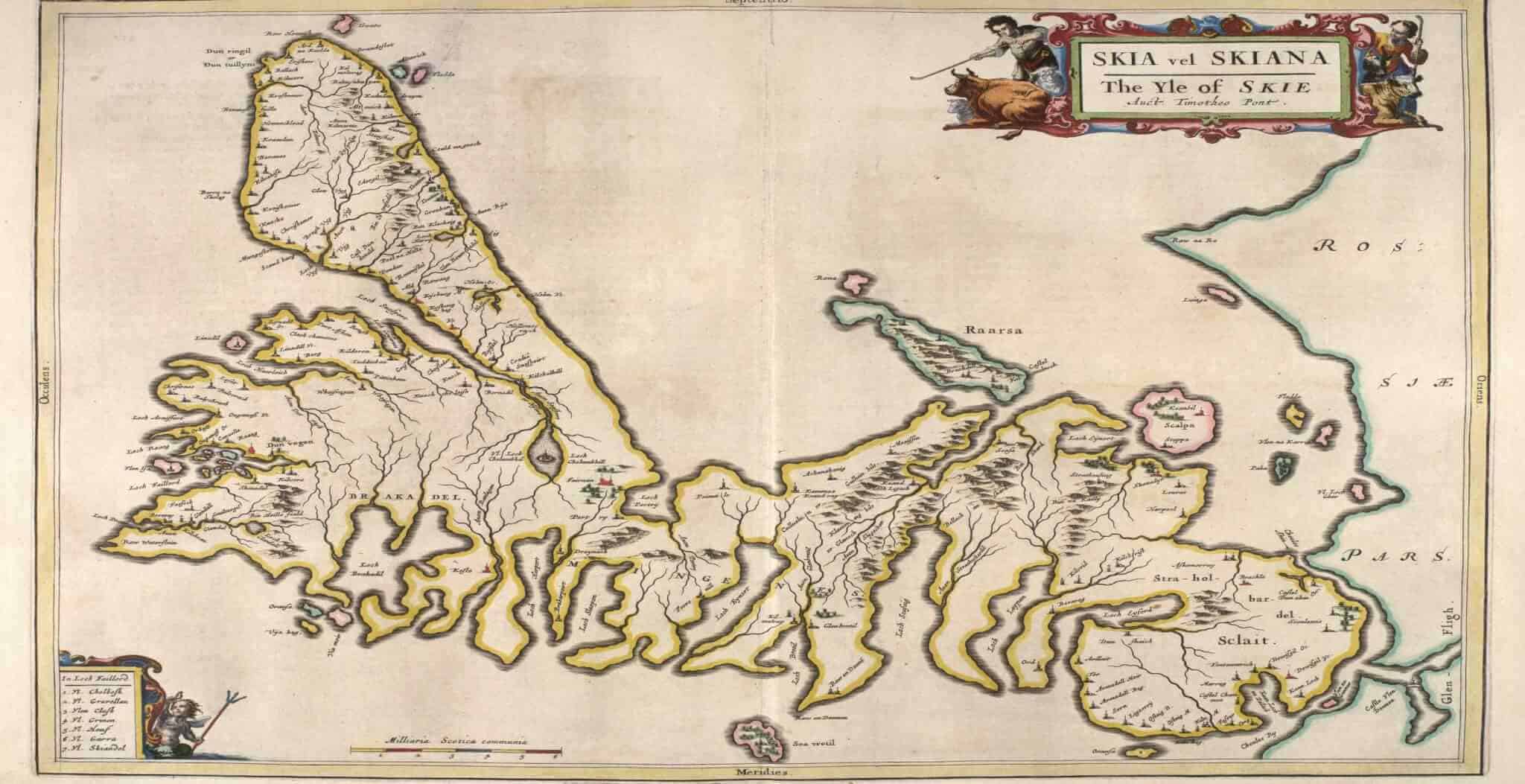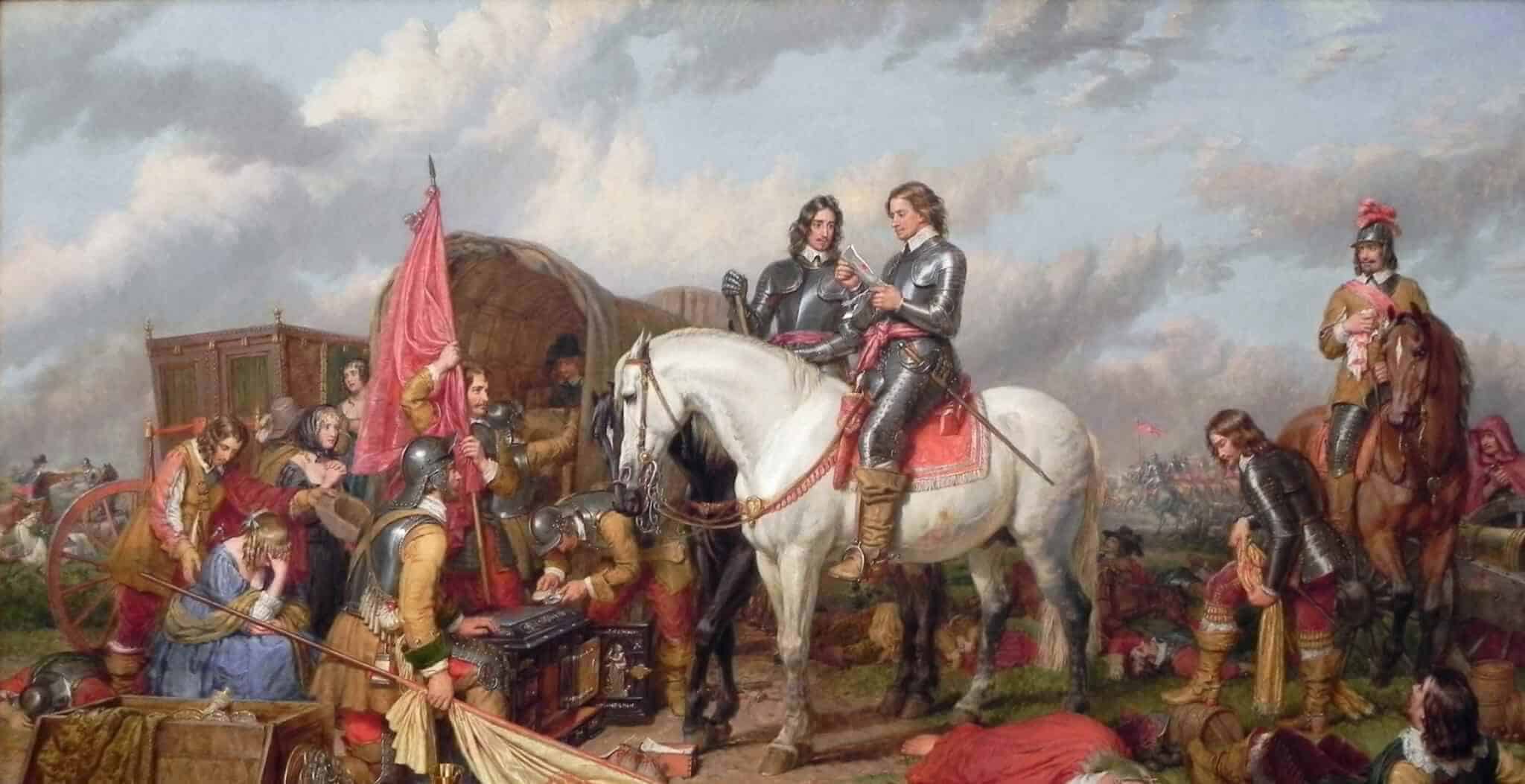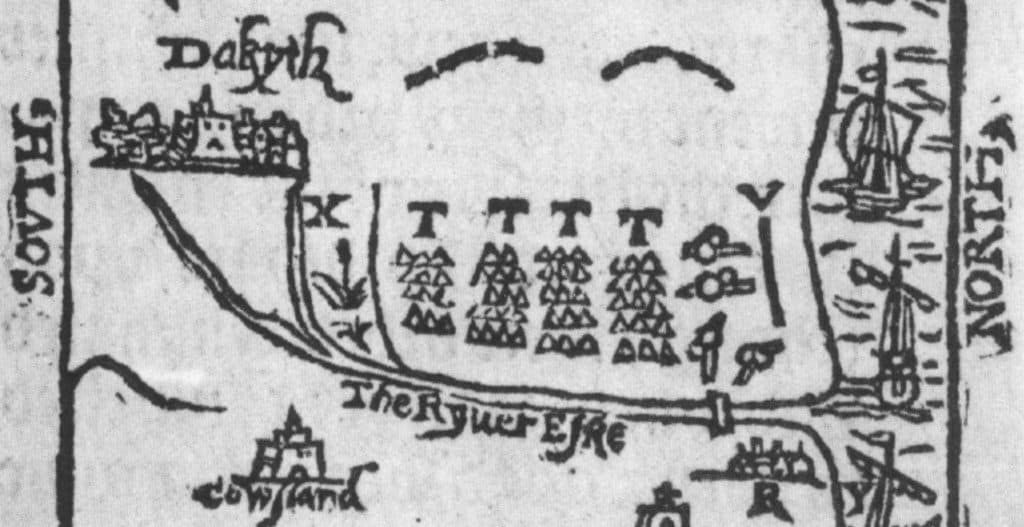Isolated since his break from Rome and Catholic Europe, Henry VIII sought to secure his northern borders though an alliance with Scotland. Henry’s proposal involved the marriage of his son, Prince Edward to the one year old Scottish Queen Mary.
When the Scottish Parliament rejected Henry’s overtures, he sought to change their mind through a show of force; the so called Rough Wooing.
Declaring war, Henry ordered his northern commanders to lay waste to much of southern Scotland including Edinburgh, Kelso, Leith and Roxbugh.
Continuing with his campaign, in the early weeks of 1545 two of Henry’s commanders again crossed into Scotland with an army of around 5,000 men, including a large contingent of foreign mercenaries and Scottish borderers.
Under the command of Sir Ralph Euer and Sir Brian Laiton, the English army ravaged much of the Scottish Border country.
To counter the insurgents, the Earl of Angus raised a force of local militia. Strengthened by reinforcements, the Scots took up their position at Ancrum Moor on 27th January 1545.
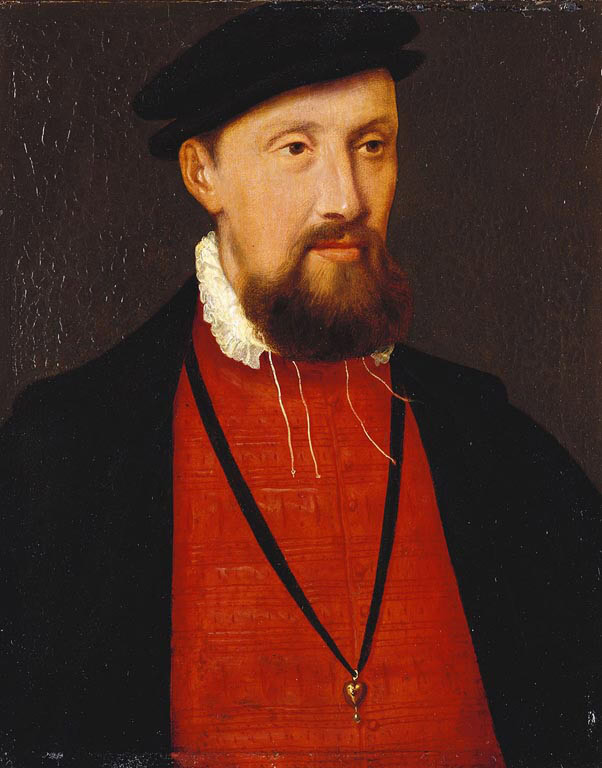
Hugely outnumbered, the Scots first lured the English cavalry into trap. Hampered by boggy ground the English infantry found it difficult to form for battle, and when the 700 Scottish borderers decided to change sides the battle was all but over.
English losses totalled around 600 killed including Euer and Laiton, with a further 1,000 taken prisoner.
The war itself ended shortly afterwards following the death of Henry VIII.
Click here for a Battlefield Map
Key Facts:
Date: 27th February, 1545
War: War of the Rough Wooing
Location: Near Jedburgh, Scottish Borders
Belligerents: Kingdom of Scotland, Kingdom of England
Victors: Kingdom of Scotland
Numbers: Scotland around 2,500, England around 5,000
Casualties: Scotland negligable, England around 800 killed and 1,000 taken prisoner.
Commanders: Earl of Arran and the Earl of Angus (both Scotland), Sir Ralph Eure and Sir Brian Layton (England)
Location:
